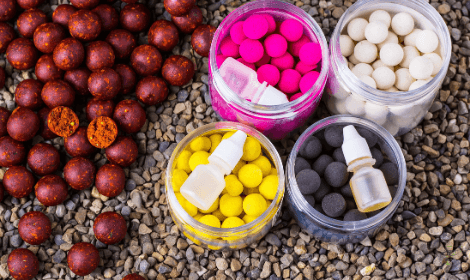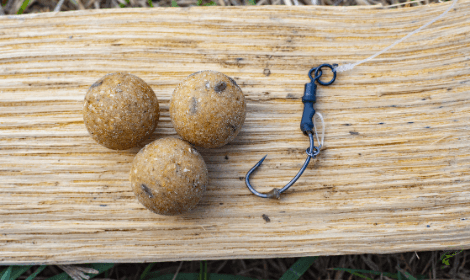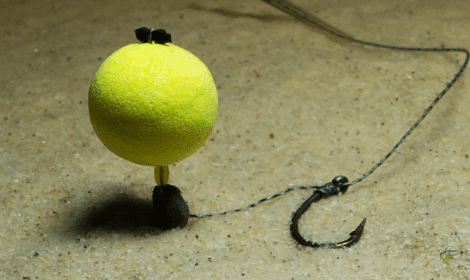
On various corners of the world, carp fishing is ranked high up in the world of angling. In some areas, not so much, but we will be targeting those who revere carp fishing as an elite level of sport.
But, if you are new to carp fishing or want to know more about it, there are a number of aspects you should know about. One of which is the bait being used to target the carp.
One of the best baits for carp are known as boilies. Knowing what boilies are, how they can be used, and more will propel your carp fishing game foward! Here is a guide to carp fishing with boilies.
What are Boilies?
There are many baits that can be used to target carp. One of the best and most popular are boilies. Boilies are boiled baits that specifically go after carp.
This presentation was developed in the U.K. as a way to weed out the other types of fish and only target carp. So far, this is exactly what the boilies have accomplished as not many other species will even bat an eye at a boilie.
Originally, boilies were super simple and could be made very easily. They still are fairly easy to make, but advancements in the industry have made the recipe a little more complicated. At its roots, a boilie is made of eggs and flour, preferably whole-wheat flour. Then, they will add some flavouring to really up the attractant qualities.
Then, the mixture is rolled into balls and hard boiled. This cooks the inside while creating a skin-like exterior to add waterproofing features and some structural integrity.
As you can see, these are super simple recipes that do a great job delivering results. Ever since those early days of innovation, the boilie has evolved into a wide range of things. These presentations come in a variety of colours, sizes, materials, and attractants.
The biggest carp fishing companies in the industry have their paws in the boilie market. So, there is a wide variety of options that you can buy at your local carp fishing shop or online. You can also make them yourself like they did in the old days. This will save you some money and you will learn a new interesting skill.
Why Should you use Boilies?

It is all fine knowing what boilies are, but if you don’t know when and why to use them, it is just background information that cannot be applied in the field. So, here we will lay out a few reasons why you should give boilies a try.
First off, boilies are very innovative and allow for a bit of creative freedom. Whether you choose to make them yourself or buy them from a manufacturer, the industry is always pushing the envelope for what can be used in them. When fishing with sweetcorn or bread, that is just about all you get. With boilies there are colours, attractants, oils, and more that come with it.
Carp are really smart fish. They want to eat what is healthy and nutritious to them. Believe it or not, the design, scent, and materials that make up boilies are considered good for carp from their perspective. That is why they are so drawn to boilies. Over the years, commercial carp have come accustomed to relying on this type of bait to live.
Another really important factor to consider is the flavour of the boilie. Just like anything we eat, we have preferences for certain flavours. Carp are the same way. A couple flavour profiles that are popular amongst the fish include sweet, fishy, natural, and stinky.
One of the most interesting is sweet. This is the same sweet flavour profile as we indulge in. Some popular flavors include Tutti Frutti, coconut, pineapple, strawberry, and many others. This is really unique and probably the only presentation in all of fishing that partially imitates something we would eat as humans.
Washing Out Boilies
One fantastic way to really elevate your carp fishing game is by washing out your boilies. Washing them out is the act of fading the boilies with water. You simply soak the boilies in water for a few days and then use them.
This accomplishes a few different things. One of which is to fade the colour of the boilie. New boilies have pretty distinct colours and builds. Carp are smarter when we think. So, there are carp out there that see brand new boilies and just stay away because they know something is up. When the colour is far more faded and just sitting at the bottom, the carp will be more likely to trust it and take a bite.
Washing out the boilies also alter the chemical composition of the boilies. Different scenes and oils will be extracted to change the makeup. Again, if a carp is able to point out these distinct features, washing them out will trick them even more.
Another really important factor to consider is what the boilies are soaking up. When you throw a dry boilie into a pond for instance, that boilie will quickly start to absorb up a lot of the features of that pond. If it is a little smelly and scummy, this will be reflected in the boilie. This isn’t always bad, but should be avoided in most cases.
When the boilies have already been soaked, there is a better likelihood that the pond’s water won’t disrupt the integrity of the boilie, at least not for a longer period of time. So, not only are you altering the boilies, you are making them stronger and able to last a lot longer.
To actually do the washing out, there are a few steps to keep in mind. Firstly, you need a bucket big enough to hold all of your boilies and the needed amount of water. Then, you put the boilies in and put just enough water to cover them.
It is important to not use tap water for this process. This is because tap water has certain chemicals in it that can throw off the composition. You should use clean lake water, bottled spring water, or boiled water.
Balancing Boilies

Finding the right balance for your presentation is very important. By balance, we mean using the correct size boilie for your rig and for the carp being targeted. This simple equation is important to understand so you can take advantage of the materials at your disposal.
As you know by now, boilies come in varying sizes. These sizes can range to a small five millimetres in diameter to over 25. This is a really big difference. You should not pair a small hook with a 25 millimetre boilie. This is a recipe for disaster. On the flip side, you can’t have a big hook connected with a five millimetre one. Either way, you are in for a long day of no bites.
Along with your hook, you need to consider the size of fish you are targeting. In most cases, you probably will have a decent idea of how big the carp are in that specific area. As a general rule, when you know smaller carp will be targeted, use a boilie that is between five and 10 millimeters. When the carp start to get bigger, you can branch out into the 11-16 millimeter range.
Boilies or Pop-up Boilies?

Now that you know a bit more about boilies, it is time to introduce another way to present the bait. This is in the form of a pop-up. The regular boilie presentation simple rests on the bottom. Carp are bottom feeders and find comfort in sucking boilies up from the bottom. However, these aren’t always the best presentations.
A pop-up boilie presentation allows the rig to sit slightly above the bottom of the waterway. The composition of the boilie is made to be more buoyant. The mix of the boilie is what makes it more buoyant. One tactic that companies use is by mixing in cork dust which holds air and elevates the bait in the water column.
There are a few instances where having a boilie not sit on the bottom can be very helpful. Making the decision to use a pop-up does require a little bit of field research and prior knowledge but nothing that you can’t handle.
The biggest of which is when you know the bottom is very dirty and silty. When there is no semi-solid bottom, the boilie can be lost in the muck and not visible to the carp. On that same note, a lot of pop-ups are brightly colored so they can be seen amidst the filth. Colours like white and yellow are quite popular.
There are no hard and fast rules as to which tactic needs to be used. Use your discretion in conjunction with your prior knowledge and pick a rig that will work best for you.
Best Rigs for Boilies
Throughout the course of time, there have been a lot of advancements in terms of equipment and strategies for catching carp. We see this a lot with the boilies as we have already discussed. One area that this is very present is the rig in which the boilie is situated on.
How you present the bait is super important. This is why we are rounding out this guide to carp fishing with boilies with a few of the rigs that can be used. In some ways, this is the most important aspect of boilie fishing. So, here are a few of the best rigs for boilies.
The Ronnie Rig
First off, we have the Ronnie Rig. This is also known as the spinner rig because there is a 360-degree rig that gives the rig the ability to swivel. This swivel is really important because the boilie will freely rotate. This causes a natural look and will lead to more hookups than when the carp can tell something is up.
This rotation effect also allows for a far better hookset. When that boilie can move, you are disguising the hook at the same time that it is in a perfect position to hook into the lip.
This all being considered, it is important to know that there is some maintenance required. You need that swivel to be 100% effective and the hook to be in the correct spot. Every so often, you will have to adjust the rig and make sure it is set up to work correctly.
The Chod rig
Also known as the Choddy, the Chod Rig is super popular amongst carp anglers, especially when using boilies. This is the exact rig to use when you know the bottom of the waterway is silty, dirty, or full of weeds. This is because the Chod Rig pairs your boilie with a hook that has improved buoyancy. So, it slightly lifts off of the bottom and gives it a more present action.
This setup is quite similar to the Ronnie Rig in the fact that it has a 360-degree rotation aspect. This is a great perk for the same reasons at the Ronnie Rig.
The Snowman Rig
Although there are many more rigs that can be used with boilies, the final on our list is the Snowman Rig. This rig combines the traditional boilie with a pop-up all on the same thread. This adds an extra ounce of visibility.
You can play around with the thread length and colours of the boilies as you see fit. So, use this rig in really dirty, mucky water to yield the best results.
That’s All!
After all of that information, you will hopefully have a lot more knowledge about carp fishing with boilies. As you can see, there is a lot that goes into it, but with this important information, you are on a track for success! So, the next time you decide to fish for carp, use some boilies and take into consideration these tips and tricks.

